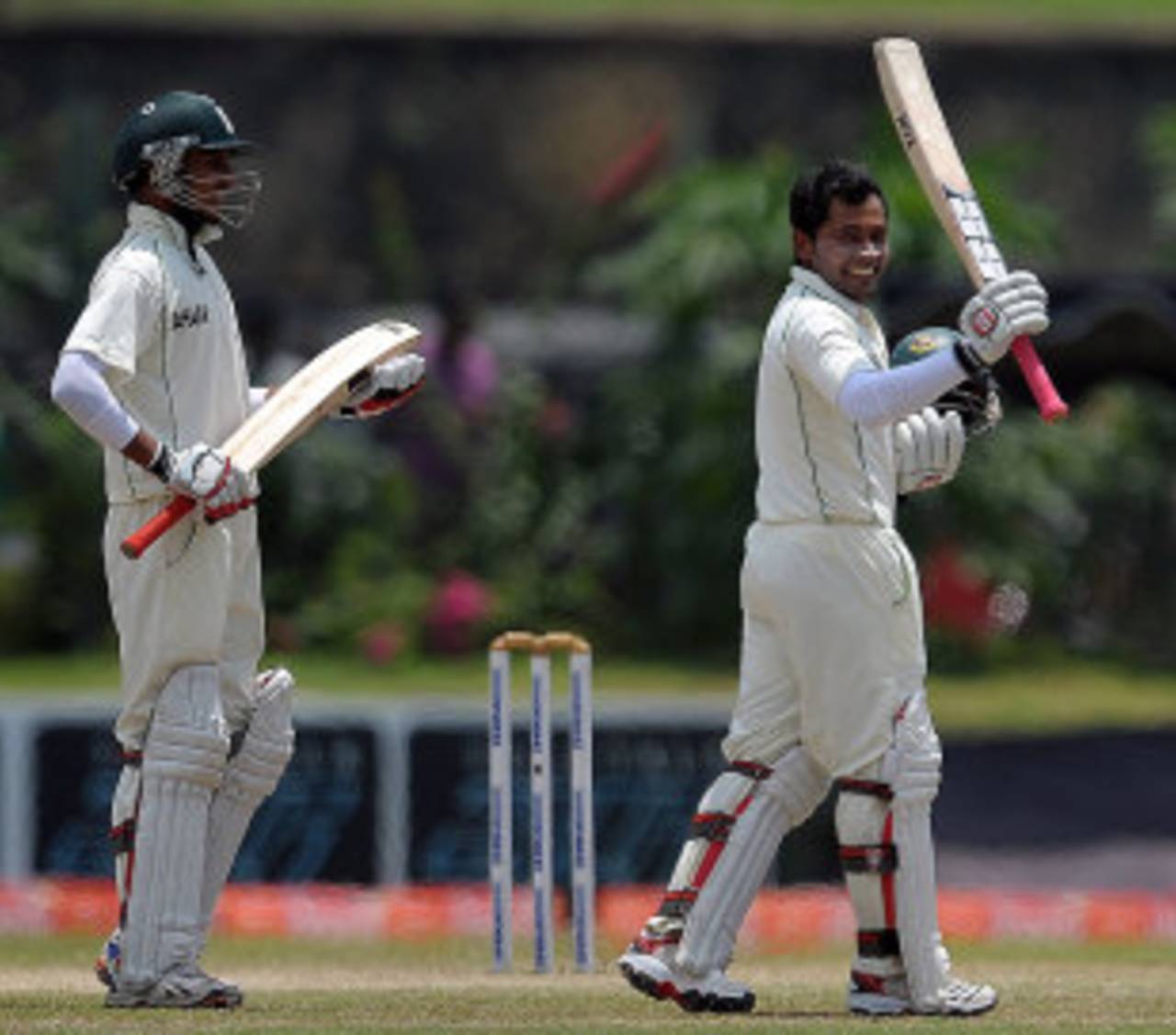Sri Lanka's departing national curator Anurudda Polonowita has said a more sporting pitch was in the pipeline for Sri Lanka's second Test against Bangladesh at the R Premadasa Stadium, after a lifeless pitch in Galle had made a result impossible in the
first Test.
Polonowita retires after 19 years as national curator, during which time he has prepared over 90 Test pitches, in addition to hundreds of ODI and first-class wickets. The surface for this Test will be his last, and SLC plans to felicitate him for his service during the Test.
Two days before the second Test, the strip on which the match will be played was dressed in a thick layer of grass, which suggests the pitch may be conducive to seam bowling early in the match. The Premadasa pitch has generally been more seamer-friendly since being relaid, with pace and bounce also having been increased markedly.
The Premadasa has not hosted a Test since
November 2010, when West Indies toured Sri Lanka, and had had its square re-laid only months prior to that match.
"It will be a different pitch from Galle," Polonowita said. "I can't talk about it much, but the preparation has been going well, and I'm sure it will be a good Test match pitch."
Polonowita has largely been responsible for the extra assistance for the fast bowlers at the three venues Sri Lanka developed for the 2011 World Cup. Both the pitches at Pallekele and Hambantota international stadiums have also seen a significant departure from the drier, spin-friendly conditions that Sri Lanka's playing surfaces have traditionally been associated with.
"The pitches were slow and low, so I decided to redo all the pitches before the World Cup. We took a very methodical, scientific approach and managed to prepare pitches that are much better now.
"At the Premadasa, there were a lot of complaints that at night, under lights, some water seeps up to the pitch and affects the way the pitch plays, so before the World Cup, we raised the whole ground by three-and-a-half feet, and got the gradient right on the whole ground. Now it doesn't do that."
In addition to modernising pitch preparation in Sri Lanka by identifying the most suitable types of clay through scientific testing, Polonowita also introduced the practice of covering the entire ground, during rain delays - a task he said is not undertaken anywhere else in the world.
"Because we sometimes have to play during the monsoon, we thought it was better to get the ground covered in under five minutes, so that when the rain stops, the cricket can start within 15 minutes. In other parts of the world, the rain can be light, but here because it rains hard, it would take longer to restart, if not for our method."
The team of agriculture graduates that work beneath Polonowita have also contributed to his success, he said, as they have applied the knowledge from their field into pitch preparation.
"They understand the soil and how it behaves, so that is good. But ultimately preparing pitches is about practical experience. I have trained them and I'm confident that they will do a good job."
Deputy national curator Janaka Sampath is expected to be appointed to Polonowita's position after Polonowita's retirement.
Andrew Fidel Fernando is ESPNcricinfo's Sri Lanka correspondent. He tweets here
